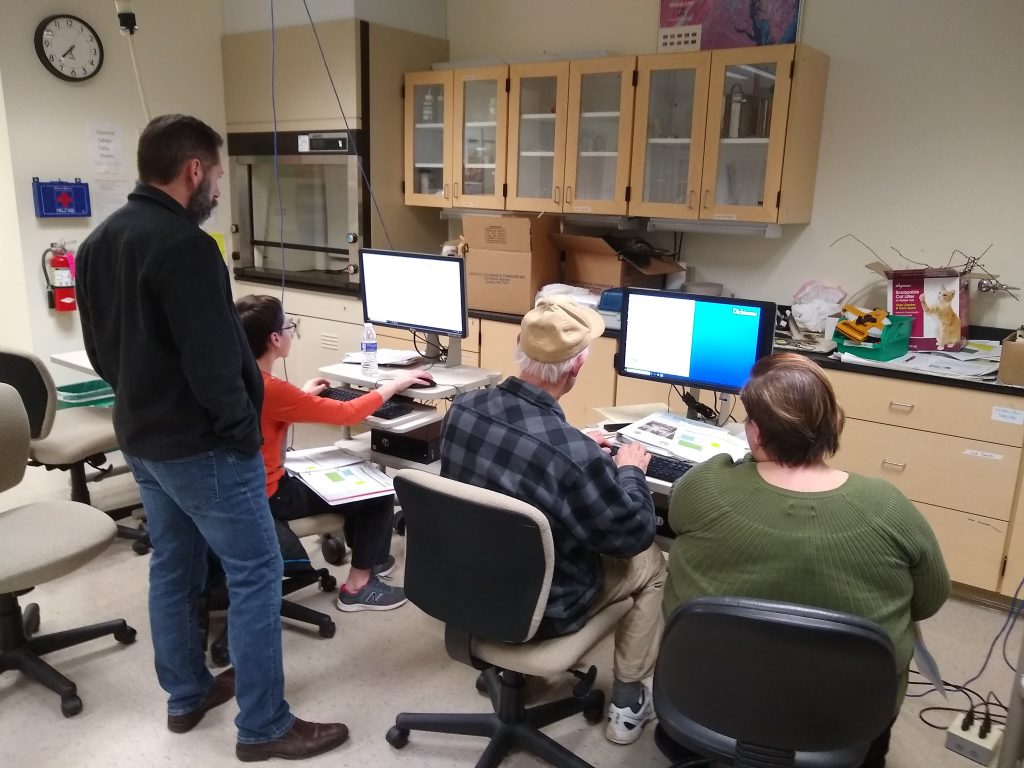February 18, 2020
ALLARM Members: Helen Schlimm ’17, Suzanne Hartley, Karan Shakya ’20
On February 5, ALLARM invited the Stream Team from Cumberland County for their QC (Quality Control) sample submission and to introduce them on how to submit their results to the Chesapeake Data Explorer. This online Data Explorer is maintained by the Chesapeake Monitoring Cooperative who uses this website to compile data on water quality from different sites around the Chesapeake Bay Watershed.
Our meeting began with volunteers reflecting on their water monitoring. We were glad that most volunteers were getting used to the monitoring process which helped them complete their monitoring faster. This was also an opportunity for volunteers to bring up any concerns or struggles with monitoring, and we worked together to share tips and troubleshooting strategies. Then, we moved on to the Data Explorer tutorial where volunteers registered an account to submit their results. Volunteers were excited to submit the data they had collected and also to explore the Data Explorer to see the results from other sites. With the Cumberland Stream team, ALLARM has now helped 30 volunteers who monitoring 22 sites submit their data to the Data Explorer.

Cumberland Stream Team members uploading their data to the Chesapeake Monitoring Cooperative Database.
For me, this meeting provided a new perspective on the Stream Team process. I have participated in volunteer training and QC workshops, but this was my first Data Explorer workshop. To observe volunteers submitting their data completed my picture of how a Stream Team collects, assesses, and submits their water quality results. Listening to the continued interest and curiosity of voluneters, and how closely they observe their water body always fascinates me. Meetings like this helps me realize how amazing citizen science is in not only collecting data but also encouraging communities to take notice of their surrounding environment.